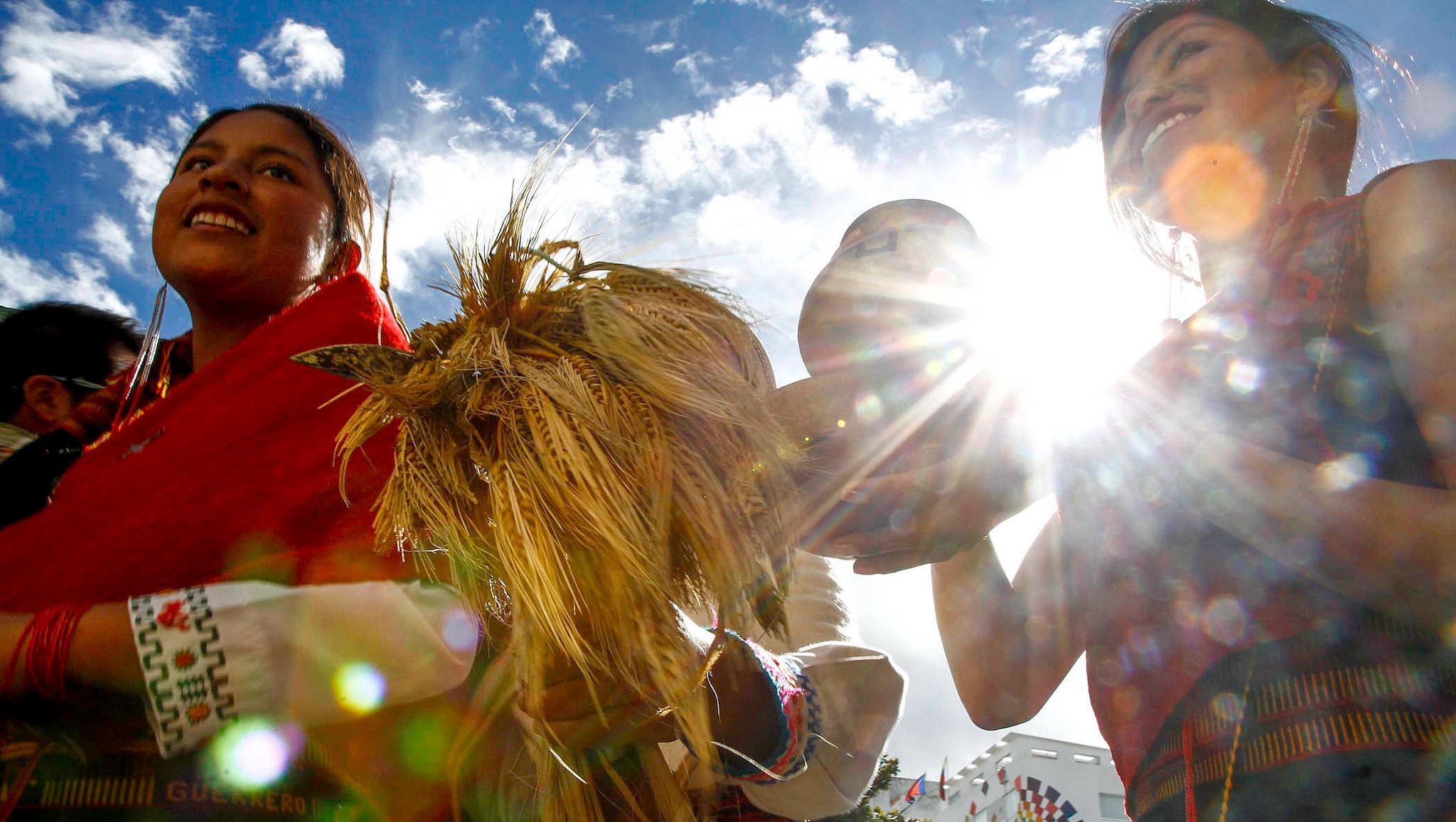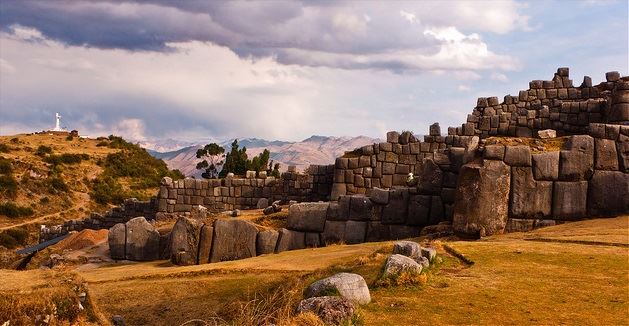Cusco, the old Inca capital and one of the most important colonial centers in Latin America, is replete with history. When they want to have a party Cusqueños draw on centuries-old traditions – with spectacular results. We caught up with one of our longest serving Cusco guides and passionate festival-goer Allison Monge, to get the low-down on four of the most interesting festivals.
Chiaraje – 20 January
“The year starts with perhaps the weirdest festival of them all. Chiaraje is a ritual war in a place called Canas, where three different ethnic groups (the Checca, Qqehue y Langui peoples) fight one another. Only the men fight and if someone dies, out of respect for the tradition, the police will not lay charges. These days they put up a fence around the battlefield so it’s safe to watch. On 25 December there’s a similar, but less brutal, festival which involves one-on-one fights between people who’ve had disagreements over the year. Once the fight is over, both parties have to bury their grudges and make peace.”
El Señor de los Temblores (the Lord of the Earthquakes) – Monday before Easter
“Andean people remember the great Inca Pachactuec as ‘the one who shook the earth’ but they have just as much reverence for the god Pachacamac, the calming influence who was the ying to Pachacutec’s yang. Every 300 years Cusco experiences a massive earthquake and Pachacamac is seen as the one who minimizes the impact of the aftershock. The darkened crucifix which represents Pachacamac is paraded around Cusco on Holy Monday and he returns to his home in the cathedral followed by 15,000 people. When he turns and ‘blinks’ at the crowd they fall to their knees and feel instantly blessed. This festival is a great way to see how much the local gods mean to us, even if they are often represented by Christian icons.”
Section Type: standardWidthImageS
El Señor de los Temblores (Photo: Renate Zindel)

Corpus Christi – 60 days after Easter Sunday
“The day before the procession two saints from the South of Cusco have a race to see who can get to the plaza first. It’s a real race between opposing neighborhoods, San Sebastian and San Geronimo. The communities take it in turns to carry the saints 50 steps at a time as they’re really, really heavy. This race is great fun to watch. On the day itself there’s a very long procession, with lots of singing, dancing and drinking, where the 14 saints make the rounds of the plaza. They then spend a week ‘talking’ to the Señor de los Temblores in the cathedral about what lies ahead for Cusco. For many of us the most important thing about Corpus Christi is chiri uchu…A special cold dish made up of foods from all four corners of the empire. This is the only day when the whole of Cusco eats guinea pig in the plaza!”
Section Type: standardWidthImageS
Festival dress (Photo: Marianne Serra)

In case you were wondering, here’s a description of chiri uchu from leading website Cusco Eats: “It has corn as its base, with guinea pig, chicken, a kind of jerky (chalona), and sausage on top of the kernels of gold. Then comes a slice of cheese from the neighboring highland region of Puno, a torreja (a Spanish omelette with corn flour, compis potatoes, yellow squash, onion greens, and spices), and then sea weed and fish eggs from the Pacific coast. A slice of colorful rocoto pepper occupies the top”
Inti Raymi (Sun Festival) – 24 June
“These days it takes place on 24 June but Inti Raymi used to be celebrated on the Winter Solstice. It’s all about worshipping the sun – a very important life-force in the chilly heights of the Andes. The ritual begins with lighting the fire of life at the Korikancha, the most important Inca building in Cusco. Afterwards there’s a small ceremony at the Temple of the Sun, where representatives of the four regions of the Tawantinsuyu (Inca Empire) bring offerings from their areas. Things like coca leaves from the Amazon, metal works from the Northern region, shells from the coastal region, and potatoes from the Southern reaches of the Empire. From here there’s a short detour to Plaza de Armas (a modern addition) so that the ‘Inca’ and the mayor of Cusco can exchange messages. Once that’s done, the Inca is carried all the way to incredible ruins at Sacsayhuaman above Cusco. Until recently a real llama was sacrificed, but nowadays (as a result of protests from animal rights activists) they only do a mock sacrifice.”
Section Type: standardWidthImageS
Inti Raymi (Photo: JM Lawton)

Insider's tip: “Every year on 21 June, there’s a New Year’s festival at a place called Tres Cruces (about four hours from Cusco); an utterly amazing lookout where you can watch the sun rise over the jungle. While the festival only takes place once a year, the sunrises are incredible May through July.”
A final word from Allison
“I can totally recommend adding a day to your trip to witness or take part in festivities. You get to experience real, living cultures that go beyond anything you can see on a tour.”
Section Type: cta
Keen to see Cusco for yourself? Check out our Peru itineraries or speak to one of our Destination Experts about crafting the bespoke vacation of your dreams.

 South America
South America South America
South America